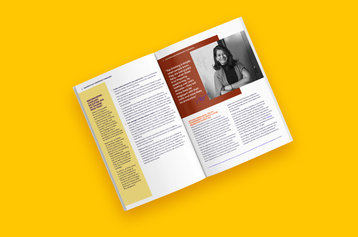
If your small to medium-size business is growing, so are the duties and responsibilities of each department, including payroll and HR. When it comes to payroll vs. HR, what is the difference and how do the two work together? In this article, we'll look at how these separate functions are essential for effective people management and the smooth functioning of a business.
The Functions of Payroll within a Business
Payroll administration is processing, managing and administering the payroll functions of a company. In most organizations, payroll functions are handled by either the finance or human resources department and/or payroll professionals. Payroll functions include:
- Calculates, processes, and distributes employee pay, salaries, bonuses and or commissions based on time worked, performance or other relevant factors.
- Processes deductions such as federal and/or state taxes, Social Security contributions and other withholdings or deductions from employee earnings.
- Completes payroll tax reporting.
- Ensures compliance with applicable payroll rules and requirements.
- Maintains accurate payroll data and records and reconciles payroll data if necessary.
- Prepares payroll reports for management or government agencies.
- Addresses any payroll-related inquiries or issues from employees.
Importance of payroll professionals
Payroll professionals perform multiple critical services in an organization. A payroll department ensures the organization pays employees accurately, compliantly and on time, which is essential for maintaining employee morale, motivation and satisfaction. Payroll professionals also play a critical role in maintaining wage and hour compliance. They provide the support and expertise to help ensure compliance with rules and requirements governing pay.
In addition, payroll data and records provide valuable insights for financial reporting, budgeting and strategic decision-making, contributing to the organization's overall financial health and stability.
The Functions of HR Within a Business
The human resources department is a key part of a company, supporting and managing its most valuable asset: its people. Human resources covers a wide range of responsibilities aimed at managing and supporting the organization's workforce. These functions can include:
- Recruitment and hiring. HR seeks out potential candidates, helps evaluate them through interviews and guides new hires through their early days in the company through onboarding.
- Serving as a mediator in the organization handling employee relations. If internal conflicts or performance issues arise, HR helps navigate the situation, sometimes even implementing disciplinary measures when needed.
- Coordinating training and development programs. They're focused on helping each team member perform their best, always growing and adapting.
- Maintaining HR compliance. They're tasked with seeing that every action aligns with employment-related rules and requirements.
- Managing employee records. This includes employment-related information such as Form W-4 and Form I-9. They may also provide administration such as maintaining employees’ tax forms and support on benefit inquiries.
- Managing the compensation and benefit packages for employees. HR determines payroll and handles the payroll services and benefits administration and confirms that everyone is paid properly.
The importance of HR professionals
HR professionals play a strategic role in shaping the company's future by maximizing the potential of its workforce. This includes workforce planning, organizational development, and promoting diversity and inclusion. They're not just about managing people; they're about cultivating a harmonious, productive, engaging, and fulfilling employee experience and work culture. This contributes to the long-term success and sustainability of the organization.
Payroll vs. HR: Working Together
When it comes to payroll vs. HR, there's actually no "versus." They're allies. Here are some ways these two departments can coordinate to maintain smooth operations for your business:
- Employee onboarding. While HR is responsible for hiring and onboarding new employees, payroll ensures that employees are paid properly.
- Employee data management. HR maintains employee records, including personal information, employment contracts, performance evaluations, job descriptions and position changes and other confidential employee data. Payroll relies on this information to help ensure accurate and up-to-date employee compensation and benefits administration.
- Compensation and benefits. HR helps to set compensation and benefits policies, such as the company’s payroll, salary increases, incentives, bonus payments and employee benefits packages. Payroll uses this information to process the payroll by accurately calculating paychecks, deductions and benefits contributions.
- Time and attendance. HR typically helps to set time off policies and practices, then tracks time-off requests, employee attendance, leaves, vacations and absences. Payroll needs this info to calculate accurate time off balances and employee pay, such as overtime payments, holiday pay, paternity or maternity pay, or wage reductions.
- HR and wage and hour compliance. HR and payroll departments collaborate to address compliance with employment-related rules and requirements. HR provides guidance on changes affecting payroll, such as changes in compensation, exemption status and minimum wage updates. Payroll implements these changes in payroll processing and reporting.
- Payroll processing. Payroll processes the payroll, including calculating per pay period employee wages, payroll taxes, deductions and benefits contributions. HR assists by providing updated employee information, addressing any payroll changes, inquiries or discrepancies, and verifying data accuracy within the payroll system.
- Employee separation. When an employee leaves the organization, HR handles the separation process, including exit interviews, final paycheck and benefits administration. Payroll ensures that final paychecks and benefit payments are accurately processed and timely disbursed.
- Reporting and analytics. HR and payroll collaborate to generate reports on employee-related metrics and analytics. These reports can include headcount, turnover rates, workforce costs, benefit usage and other data that help in strategic decision-making.
Find the Right Comprehensive HR Solution
Considering the relationship between payroll and HR departments, outsourcing to one comprehensive solution to integrate both can be a lifesaver. It can be particularly helpful for small to medium-size businesses that are running short on time and resources to run these departments effectively.
TriNet provides comprehensive HR solution, helping clients streamline critical HR processes for their organizations of all sizes. Also, our robust platform provides payroll processing, tax filing and benefits administration alongside a suite of other HR services. Find out how TriNet's payroll processing services and HR functions can help your business to focus more on its growth, is cost effective, and positions you for success.
This communication is for informational purposes only, is not legal, tax or accounting advice, and is not an offer to sell, buy or procure insurance.






